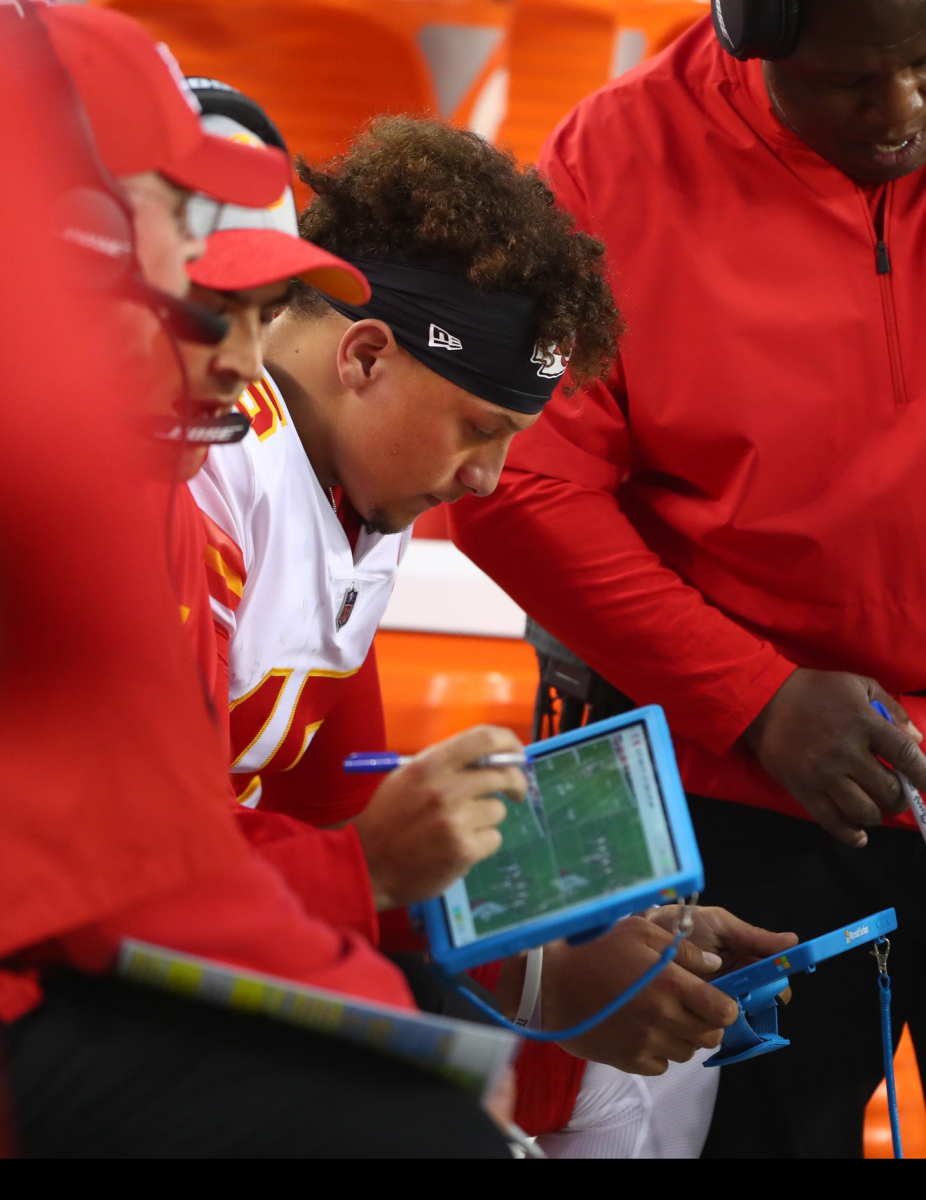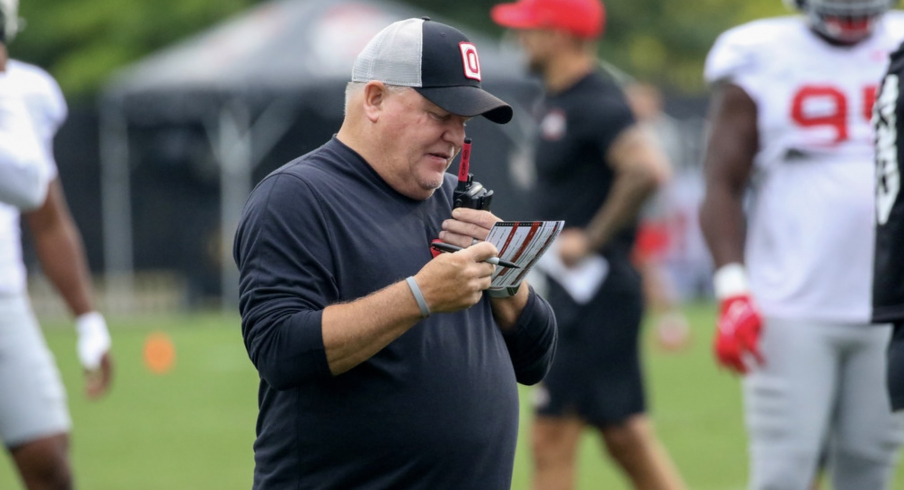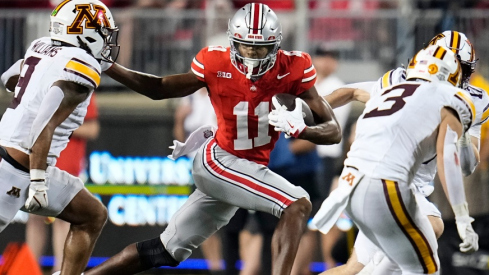Conference realignment. A 12-team playoff. The transfer portal. NIL. Big Ten Football on CBS.
Such major changes to the 155-year enterprise known as college football have come in rapid succession, spurring more advancements in just the past few years than in the prior three decades. But just as the forward pass, face masks, and the NCAA v. Board of Regents of the University of Oklahoma decision all indelibly left their marks on the game, the modifications being implemented this season will forever alter the landscape of the sport.
Much of the focus has been on the changes made to the administrative elements of the game, such as the way rosters can be built, how games would be scheduled, and the manner in which champions will be crowned. But often lost in those discussions were the additional rule changes approved last winter and spring.
These changes, I believe, will ultimately foster a schematic revolution within the sport, akin to what happened when spread offenses began stretching defenses across the field in the early 2000s.
The most well-known advancement is the introduction of helmet radios for signal-callers on each side of the ball, which comes in response to the sign-stealing conspiracy perpetrated by Conor Stalions and the University of Michigan coaching staff. Though first introduced by Paul Brown and the Cleveland Browns long before, the NFL has formally allowed such technology for three decades.
“I love the helmet speakers,” Ohio State linebackers coach James Laurinaitis said last February after the rule change was formally approved. "You kind of had to separate coaching and signaling. Where I think now just being able to coach, I’ll have a lot better pulse on ‘OK, what are the plays that are actually happening?’ Because that's a lot to handle, when it's going on and you had to have three, sometimes we had five signalers up and trying to confuse people on who's active, who's not.”
"If you're breaking the huddle early, you've got him until 15 seconds. He can give you little reminders here and there."– Will Howard
As has become clear to many fans since the allegations against Stalions first emerged last fall, college coaching staffs spent an astronomical amount of time disguising and refreshing their signals to ensure their security on Saturdays. With less time dedicated to the physical act of signaling in each call - both during practice and on gameday - all parties involved will now be able to use that time to focus on the contents of the call itself, rather than its transmission.
With the radio staying on until 15 seconds remain on the play clock, coaches will be able to do more than simply deliver the play call. They can give the designated player wearing the helmet speaker additional instruction, such as what to look for from the opposition in a given situation.
"If you're breaking the huddle early, you've got him until 15 seconds. He can give you little reminders here and there," OSU quarterback Will Howard said of his experience practicing with the speakers during spring and fall camp. "If you use it to your advantage and you're efficient with it, then I think it's going to be a really good tool."
Such practices have long been used at the NFL level, given the added complexity and pre-snap disguises employed at that level, and are ingrained in the developmental process of every NFL quarterback.
"When you have a young quarterback in a new system, it helps tremendously," longtime NFL head coach and play-caller Bruce Arians said in 2017 of the technology. "You wish you could talk to him all the way to 5 seconds."
Of course, the comms only go to one player, meaning the sport is likely to see more formal huddles this weekend than it has seen in a generation, largely eschewing uptempo philosophies in return for added communication between all eleven players. At least, that will be the case on offense.
"With it only being in one defensive player's helmet, it's hard in that regard," one SEC defensive coordinator told CBS Sports. "You're not going to have a defensive huddle because you don't know what the offense is going to do. You're still going to have to signal in your defensive signals ... it's going to be a process."
Such a change should ultimately favor offenses even more, giving fans a slower pace but making up for it with better execution on that side of the ball. Defenses, meanwhile, must be prepared with automatic checks for virtually any situation, as offenses will be able to dictate how much defenses can communicate between each play, based on how quickly they snap the ball.
The helmet speakers won't be the only change to the way players and coaches communicate during games. Another innovation that has become common at the next level, sideline tablets, was also approved, allowing coaches and players to instantly review game action. This allows coaching staffs to identify where schemes failed and how to incorporate adjustments quickly.

Credit: © Mark J. Rebilas-USA TODAY Sports
“As you go through each play, trying to draw it on a grease board and trying to basically reconstruct it—every time you did that, there was an error,” former Boston College coach Steve Addazio told Sportico of the previous system for diagnosing the opposition in real-time. “When I was active in this stuff, that’s what I know I wanted the most.”
That ability to instantly review the previous series will be a critical part of the equation for Chip Kelly, who returns to a full-time coordinator role for the first time since 2008.
"His plan is to be up in the box," Day said of Kelly's gameday plans as a member of the OSU staff. "I think for him, being able to get organized up there, he's got the tablet up there. He's got his call sheet up there."
Alongside him will be veteran coach Tim Drevno, Kelly's offensive line coach at UCLA who is now listed as a Quality Control coach for the Buckeyes. While he can't go out and recruit - a role still reserved for the 11 designated position coaches, coordinators, and the head coach - Drevno, and any other staff member for that matter, can now directly instruct players on the field in both practices and games, also mimicking the structure found in the NFL.
Just a year after many OSU fans complained that one of those 11 coveted coaching spots went to a full-time special teams coordinator, such a concern would be moot today. As Day noted earlier this week, another QC coach, Rob Keys, will effectively step into that role this season now that anyone can interact directly with athletes on the field.
Instead of helping organize things in the background, handing over plans to designated coaches in the meeting room before watching from the sideline in practice, the former head coach and special teams coordinator at D-II Findlay can now get directly involved. As coaches can now access information and relay it to players faster than ever before, the demand for such expertise will only grow, especially at programs with more resources like Ohio State.
“It’s going to create more unintended consequences,” Memphis head coach Ryan Silverfield said of the rule change. “You’re going to see blueblood programs taking more coaches in the Group of 5. If you’re a MAC wide receivers coach making $80,000 and Michigan will pay you $150,000 to be on the field and you don’t have to go on the road recruiting, get to be with your family, a lot of guys are going to do it.”
Surely, some college football fans will not welcome any change that makes the sport more like its professional cousin. However, none of these evolutions should affect the traditions, pageantry, and unique geographic associations that define this level of the game.
Meanwhile, the digital revolution that redefined so many aspects of modern life throughout the past quarter-century had the same effect on football, initially closing the knowledge gap between different levels of this sport. Over the past half-decade or so, however, the NFL became far more advanced thanks to tools like sideline tablets and film databases that are accessible from a phone anywhere on the planet.
While college fans surely appreciate a wider diversity in scheme differences compared to the NFL, the introduction of these additional resources doesn't mean that variety will go away. Only that it will adapt and change, as it always has.



